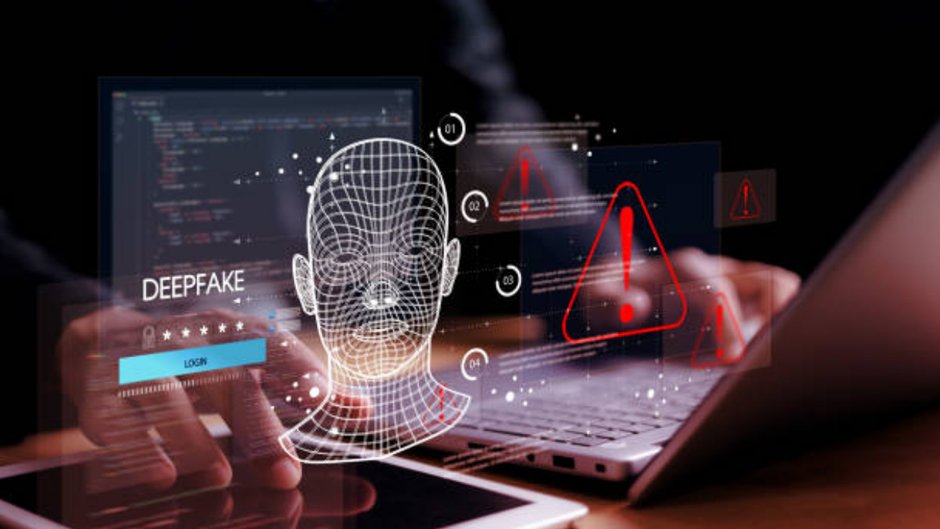The digital era has changed the way we listen to entertainment, communicate with celebrities, and understand authenticity. Artificial Intelligence (AI) has contributed to this change in an enormous way- both in terms of innovation and controversy. One of the most discussed consequences of the development of AI is the development of celebrity deepfakes, hyper-realistic videos or images that substitute the face or voice of a person with that of another one with the help of advanced machine learning algorithms. Although these creations may be applied to artistic or humorous purposes, they have also caused serious ethical, legal, and privacy issues, and have essentially redefined the meaning of being real in the eyes of the general population.
Understanding Celebrity Deepfakes
Celebrity deepfakes are artificial media produced with the help of deep learning technologies, in particular, Generative Adversarial Networks (GANs). These artificial intelligence systems process thousands of real images or videos of an individual, which are often publicly available on the Internet, and process them to create extremely realistic simulations of their appearance and voice. Consequently, AI is able to imitate a celebrity saying or doing something that he or she never said or did, and it is difficult to tell the difference between fact and fiction.
Deepfake technology was originally created to be used in entertainment, film production, and to be more accessible. As an example, film producers investigated AI-generated effects to de-age actors or recreate dead actors. Nevertheless, as open-source deepfake technologies have become ubiquitous, the technology has been used in an abusive way to produce misleading or malevolent content- fake interviews and political speeches, as well as manipulated videos of celebrities distributed without their permission.
How AI Is Changing Fame
Artificial intelligence is remodeling the very concept of reputation. Celebrities have always existed under the microscope of the target audience, and deepfake technology has delivered a new size to their vulnerability. Nowadays, they may be easily imitated and edited, and each person with the important system can create scenes that appear real.
With this new age, fame is accompanied by a digital duplicate, a duplicate of a person that can live without reality. Such a virtual twin is able to shape the opinion of people, create misinformation, and even affect career prospects. To illustrate, an example of a convincingly edited deepfake of an actor or musician can go viral, ruining the reputation of the person before the fact is discovered.
This effect questions the authenticity of celebrities. Viewers are starting to wonder what is true and what is created online. Deepfakes are attractive because of their realism, and their realism is the reason to distrust media and entertainment. As a result, celebrities and their agents are resorting more to deepfake detection software and face recognition technology to protect their reputation and image.
The Threat to Privacy and Consent
Although fame has always been accompanied by a lack of privacy, deepfake technology has destroyed those limits even more. Celebrity deepfakes frequently imply the unauthorized usage of personal images, which is a violation of the right to privacy and the principle of consent. When the face of a celebrity is digitally placed in compromising or fake situations, it not only ruins the image of the celebrity but also leads to psychological and emotional trauma.
It is not just a matter of leisure. With the further development of AI fashions, they are able to reproduce the facial expressions, speech patterns, and even gestures to such a volume that the content created by using them turns into indistinguishable from fact. This kind of accuracy isn’t always the best dangerous to the lives of celebrities as well as the lives of commonplace human beings. What started off evolved as a trouble in Hollywood can without difficulty be transferred to politics, journalism, and personal relationships, in which misinformation and faux media could have a long way-accomplishing consequences.
The Role of Deepfake Detection
With the advancement of deepfakes, the competition to create effective deepfake detectors has stepped up. These detection systems employ sophisticated algorithms to detect minor discrepancies in lighting, facial movements, or pixel patterns that human beings can miss. By comparing the manipulated content to verified and authentic footage, AI-based models that have been trained on large datasets can detect the manipulated content.
Detection frameworks are being heavily invested by big tech companies and AI researchers to overcome the threat. YouTube, Meta, and TikTok are testing automated verification systems to identify and delete deepfake videos before they go viral. But this fight is not over yet – the same AI methods that generate deepfakes are being applied to evade detection.
The bigger issue is that AI is the problem and the solution in this technological tug-of-war. Deepfake detection should keep up with the development of deepfake creation as long as it continues to develop. Transparency and traceability in digital media has become a critical factor in ensuring trust on the internet.
Face Verification: A Shield Against Manipulation
Face verification is one of the effective measures that can be used to fight the proliferation of manipulated media. This is done through biometric authentication to ensure that a face in a picture or video is that of a particular person. Organizations can ensure authenticity and inhibit impersonation by comparing live or recorded footage with known facial data.
In the case of celebrities and other prominent people, face verification would provide a viable protection against unauthorized content sharing. It can be incorporated into the media production processes, social networks, and streaming services to make sure that the individual in the video is who they say they are. Other digital identity verification firms are also coming up with blockchain-based systems that connect verified identities to content ownership to give a record of authenticity that cannot be tampered with.
With this technology going mainstream, it could redefine the digital media verification and sharing system, making the ecosystem greater transparent, with deepfakes being simpler to identify and greater tough to abuse.
The Ethical and Legal Dilemma
The emergence of celebrity deepfakes is a complicated issue concerning morality and legal regulations. Are the AI-created images of celebrities considered as an artistic expression or a crime against image rights? Most countries are still lagging behind in technological advancement, and many victims of deepfake abuse do not have much legal protection.
Certain jurisdictions have begun to act. An example is that a number of states in the United States have enacted legislation that criminalizes the non-consensual production and sharing of deepfake content. In the meantime, unions in the entertainment industry are pushing to have more protection of digital rights, so that the celebrities can control their digital images. Nevertheless, enforcement is uneven across the world, and due to the borderless nature of the internet, it is difficult to regulate.
The Future of Digital Authenticity
With the further development of AI, the distinction between the real and the artificial will be even less distinct. Verified online identities, artificial intelligence surveillance, and more rigid privacy policies could be the future of the celebrity culture. Although deepfakes demonstrate the artistic potential of artificial intelligence, they also make us aware of the fact that we need to be responsible in the application of technology.
Deepfake detection and face verification may be essential inside the years to are available regaining accept as true with in virtual media. In the case of celebrities, their photo protection will necessitate prison safety, as well as technological cooperation with AI developers and structures.
Finally, the emergence of celeb deepfakes is a sign of a shift in fame and privacy. The issue is that as society adjusts to this new digital truth, the priority is balancing creativity with consent, innovation with ethics, and generation with fact.







